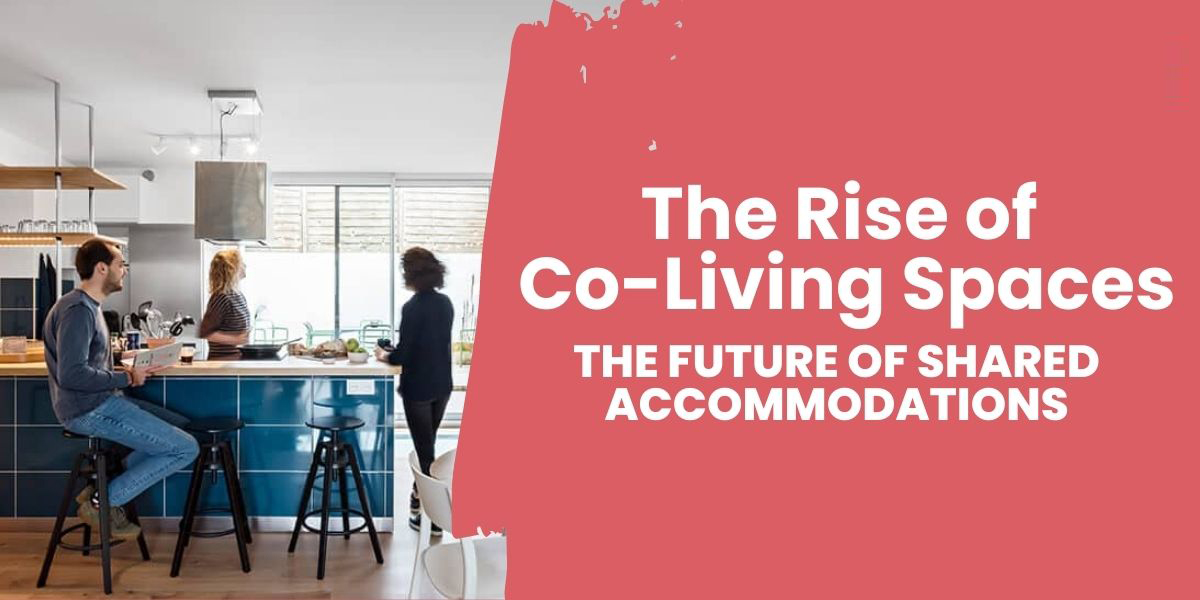In recent years, a revolutionary trend has been reshaping the way we live and interact with our living spaces: co-living. Gone are the days when traditional housing options were limited to solitary apartments or crowded dormitories. Co-living spaces, designed to foster a sense of community and interconnectedness, have emerged as a popular choice for urban dwellers seeking affordable, convenient, and socially enriching accommodations.
In this blog, we will explore the rise of co-living spaces and their potential to transform the future of shared living.
What Are Co-Living Spaces?
Co-living spaces are residential properties where individuals rent private bedrooms within shared living spaces, such as kitchens, living rooms, and communal areas. The concept draws inspiration from the age-old idea of communal living, where people cohabitate, share resources, and collaborate on tasks to create a sense of community and mutual support. These modern iterations are fueled by technological advancements and changing social preferences, providing a blend of privacy, independence, and social interaction.
The Appeal of Co-Living Spaces
Affordability: In many metropolitan areas, skyrocketing housing costs have made it challenging for individuals to live independently. Co-living spaces offer a more cost-effective solution by splitting expenses among residents, enabling access to prime locations without breaking the bank.
Flexibility: Co-living appeals to a diverse range of individuals, from young professionals seeking career opportunities in urban centers to digital nomads in search of temporary housing. With flexible lease terms, residents can adapt their living arrangements to match their changing lifestyles.
Community and Social Connection: One of the most significant advantages of co-living spaces is the built-in community. As residents share common areas and engage in communal activities, they have ample opportunities to meet new people, collaborate, and forge lasting friendships.
Amenities and Services: Co-living providers often furnish their spaces with various amenities such as gyms, co-working spaces, game rooms, and rooftop gardens. These features enhance the overall living experience and create a vibrant living environment.
Reduced Environmental Impact: By sharing resources and space, co-living residents can contribute to a smaller carbon footprint, making it a more sustainable housing option compared to traditional living arrangements.
Another Blog to Read: Best Real Estate Investment Strategies for a Recession
The Co-Living Business Model
Several companies have capitalized on the co-living trend by developing specialized spaces to cater to different demographics and preferences. These co-living operators handle property management, curate social events, and maintain the infrastructure, ensuring a hassle-free living experience for their residents.
Technology’s Role in Co-Living
Technology plays a pivotal role in enabling the seamless operation of co-living spaces. Platforms and apps facilitate rent payments, maintenance requests, and community engagement. Additionally, smart home devices within co-living spaces enhance convenience and security, offering residents control over various aspects of their living environment.
Challenges and Concerns
While co-living spaces have gained popularity, they are not without challenges. Some concerns include:
Privacy: Balancing privacy and socialization can be challenging in co-living environments. Ensuring residents have enough personal space is crucial to maintaining harmony.
Community Building: Sustaining an active and engaged community requires effort from both residents and co-living operators. A lack of community participation can dampen the experience.
Regulatory Issues: Co-living’s rapid growth has prompted discussions about the need for appropriate regulations to safeguard resident rights and ensure safety standards.
Conclusion
The rise of co-living spaces has disrupted the traditional housing market and redefined the way we view shared accommodations. Offering a unique blend of affordability, flexibility, and community, co-living spaces present a promising vision of the future of urban living. As technology continues to evolve and societal preferences shift, co-living is poised to expand further, transforming the way we conceptualize and experience communal living.
Thinking about BUYING or SELLING a Home,
Richi Khanna can help you and if you have any questions in regards to real estate, then you must call Me today at
647-997-1281
What Are You Waiting For?
CALL RICHI NOW!
Or, fill out the form on this page to receive your FREE Report


